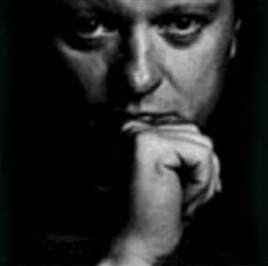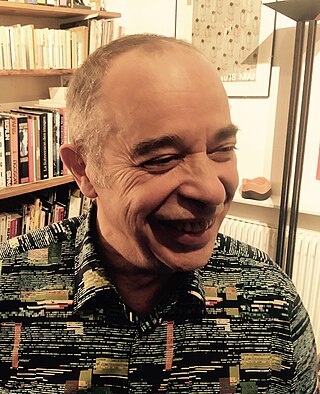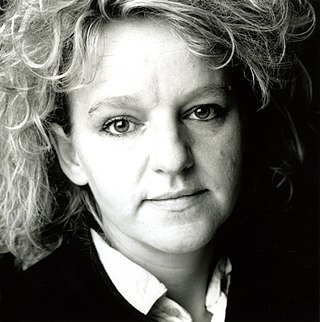External links
- Official website
- The garden of forking paths S2E6 With Andrea Cera, 19 February 2020; topics include psychoacoustics, sci-fi influences, and Andrea Cera's role in the development of sounds for the Renault ZOE.
Andrea Cera | |
|---|---|
| Born | 1969 (age 54–55) Vicenza, Italy |
| Occupation(s) | electroacoustic composer sound designer sound installation artist |
| Website | Official website |
Andrea Cera (born 1969 in Vicenza) is an Italian electroacoustic composer, sound designer and sound installation artist.
Andrea Cera graduated with MA degree (diploma) in piano and music composition at the Conservatorio Cesare Pollini in Padua (Italy). He studied computer music at the Cursus Program on Composition and Computer Music at IRCAM, in Paris. [1]
From 2000 to 2010, Cera has mainly worked with several choreographers including Hervé Robbe at the Centre Chorégraphique National du Havre, Edmond Russo and Shlomi Tuizer, [2] Pascal Montrouge, Les Ballets de Monte Carlo. In the same period he has explored sound art: installation sites have included the Centre Pompidou, Le Fresnoy - Studio national des arts contemporains in Lille-Tourcoing, institutions and art centres in Italy and France. One example of his work is Reactive Ambient Music (2005). This installation is a sort of a waiting room where external sounds of other installations control a generative background music system. [3] In 2004 he realized NightRun, an interactive installation based on the screaming of the visitors. They are here (2008) is an interactive video and sound installation created for the Centquatre-Paris, in collaboration with IRCAM.
After 2010, Andrea Cera focused in research and sound design projects with IRCAM (Paris), NOTAM (Oslo), Integra Project, Infomus – Casa Paganini (Genova). In 2011 he presented Urban Musical Game, [4] in collaboration with researchers from the Real-Time Musical Interactions team at IRCAM – Centre Pompidou, the design agency NoDesign and Phonotonic. For this installation, they used augmented sports balls to manipulate and transform an interactive music environment. [5] Other examples are the collaborations with Renault and IRCAM Sound Perception and Design Team (sounds for the electric vehicle), [6] [7] Phonotonic, [8] the SkAT-VG project (Sketching Audio Technologies using Vocalizations and Gestures, 2014–2017), [9] [10] [11] and a series of works for the Co.Me.DiA European Project. [12] In 2018 he has been nominated for Better Sound (Category: Research & Development) at the ISA International Sound Awards for Renault Symbioz Sound Design. In these same years Cera still kept a few collaborations with dance, theatre and video artist, in particular with ricci/forte [13] [14] , Yan Duyvendak [15] , Francesca Foscarini [16] , and Marie-Laure Cazin (for the project Le Cinéma Emotif, an interactive cinema prototype where the film varies according to the emotions of the spectators, analysed by EEG headsets with electrodes that capture their brain activity - project by M.L.Cazin, music by A. Cera). [17]
In recent years he collaborated with Taiwanese collective Luxury Logico and IRCAM on a robotic installation entitled The Insomnia SketchBook, premiered in 2022 [18] [19] , Renault and Jean-Michel Jarre for a new AVAS sound [20] , and with Infomus-CasaPaganini and the Galliera Hospital, for the sound design of DanzArTe, an exergame dedicated to elderly population [21] . He currently is artist-in-residence for the EU funded S+T+ARTS project ReSilence [22] .
Andrea Cera's music is concerned with hybridization and intrusiveness as tools to explore new uses of sound. [23]
Computer music is the application of computing technology in music composition, to help human composers create new music or to have computers independently create music, such as with algorithmic composition programs. It includes the theory and application of new and existing computer software technologies and basic aspects of music, such as sound synthesis, digital signal processing, sound design, sonic diffusion, acoustics, electrical engineering, and psychoacoustics. The field of computer music can trace its roots back to the origins of electronic music, and the first experiments and innovations with electronic instruments at the turn of the 20th century.

IRCAM is a French institute dedicated to the research of music and sound, especially in the fields of avant garde and electro-acoustical art music. It is situated next to, and is organisationally linked with, the Centre Pompidou in Paris. The extension of the building was designed by Renzo Piano and Richard Rogers. Much of the institute is located underground, beneath the fountain to the east of the buildings.

Philippe Manoury is a French composer.

Max, also known as Max/MSP/Jitter, is a visual programming language for music and multimedia developed and maintained by San Francisco-based software company Cycling '74. Over its more than thirty-year history, it has been used by composers, performers, software designers, researchers, and artists to create recordings, performances, and installations.

Gérard Henri Grisey was a twentieth-century French composer of contemporary classical music. His work is often associated with the Spectralist Movement in music, of which he was a major pioneer.
Hans Tutschku is a German composer.

Tod Machover, is a composer and an innovator in the application of technology in music. He is the son of Wilma Machover, a pianist and Carl Machover, a computer scientist.
Rolf Rainer Gehlhaar was an American composer, Professor in Experimental Music at Coventry University and researcher in assistive technology for music.
Derek Lawrence Keller is an American composer, guitarist, vocalist, and teacher. Keller previously served as a visiting assistant professor of music composition at Oberlin Conservatory of Music, and he currently curates the music series for St. Paul's Episcopal Church, focusing on highlighting original avant-garde and improvisational music. He also works as an adjunct professor at William Jessup University.
Åke Parmerud is a Swedish composer, musician, and multimedia artist noted for his acoustic and electronic works, which have been performed mostly in Europe, Mexico, and Canada. He is also noted for the design of stage and acoustics as well as interactive media and software. He has received recognition for his work from a number of festivals in Europe and has won two Swedish Grammis awards. He has been a member of the Royal Swedish Academy of Music since 1998.

Stéphane de Gérando is a French composer, conductor, multimedia artist, and researcher.

Jean-Jacques Birgé is an independent French musician and filmmaker, at once music composer, film director, multimedia author, sound designer, founder of record label GRRR. Specialist of the relations between sound and pictures, he has been an early synthesizer user and with Un Drame Musical Instantané, an initiator of the return of silent movies with live orchestra in 1976. His records show the use of samplers since 1980 and computers since 1985.
Oliver Martin Schneller is a German composer and saxophonist.
Kingsley Ng is an interdisciplinary artist working primarily on conceptual, site-specific and community-oriented projects. Ng crafts relationship between the work and its context through media and formats including interactive installation, public workshop, sound, spatial design and experiential design.
Sound and music computing (SMC) is a research field that studies the whole sound and music communication chain from a multidisciplinary point of view. By combining scientific, technological and artistic methodologies it aims at understanding, modeling and generating sound and music through computational approaches.

Pierre Jodlowski is a French composer of mixed music. He works in particular on intermediality, music informatics, staging, image and interactive arts.

Florence Baschet is a French composer of contemporary music.
Alexander Schubert is a German composer. Much of his music is experimental, involving multimedia, improvisatory, and interactive elements. He draws upon free jazz, techno, and pop styles.
Stefania Serafin is a professor at the Department of Architecture, Design and Media technology at Aalborg University in Copenhagen.

Bruno Zamborlin is an AI researcher, entrepreneur and artist based in London, working in the field of human-computer interaction. His work focuses on converting physical objects into touch-sensitive, interactive surfaces using vibration sensors and artificial intelligence. In 2013 he founded Mogees Limited a start-up to transform everyday objects into musical instruments and games using a vibration sensor and a mobile phone. With HyperSurfaces, he converts physical surfaces of any material, shape and form into data-enabled-interactive surfaces using a vibration sensor and a coin-sized chipset. As an artist, he has created art installations around the world, with his most recent work comprising a unique series of "sound furnitures" that was showcased at the Italian Pavilion of the Venice Biennale 2023. He regularly performed with UK-based electronic music duo Plaid. He is also honorary visiting research fellow at Goldsmiths, University of London.